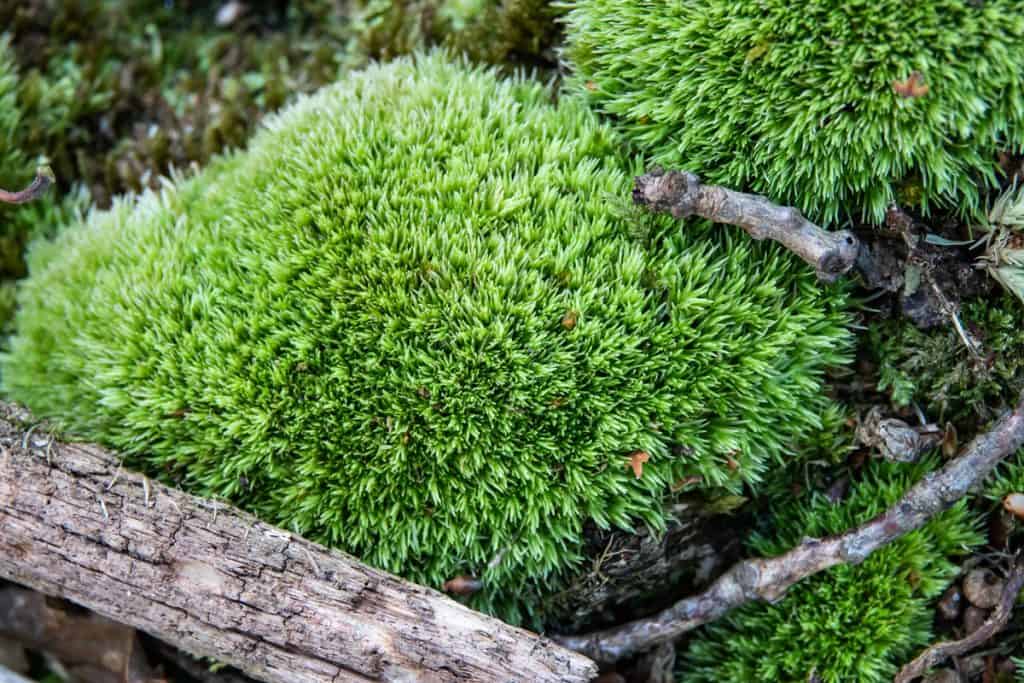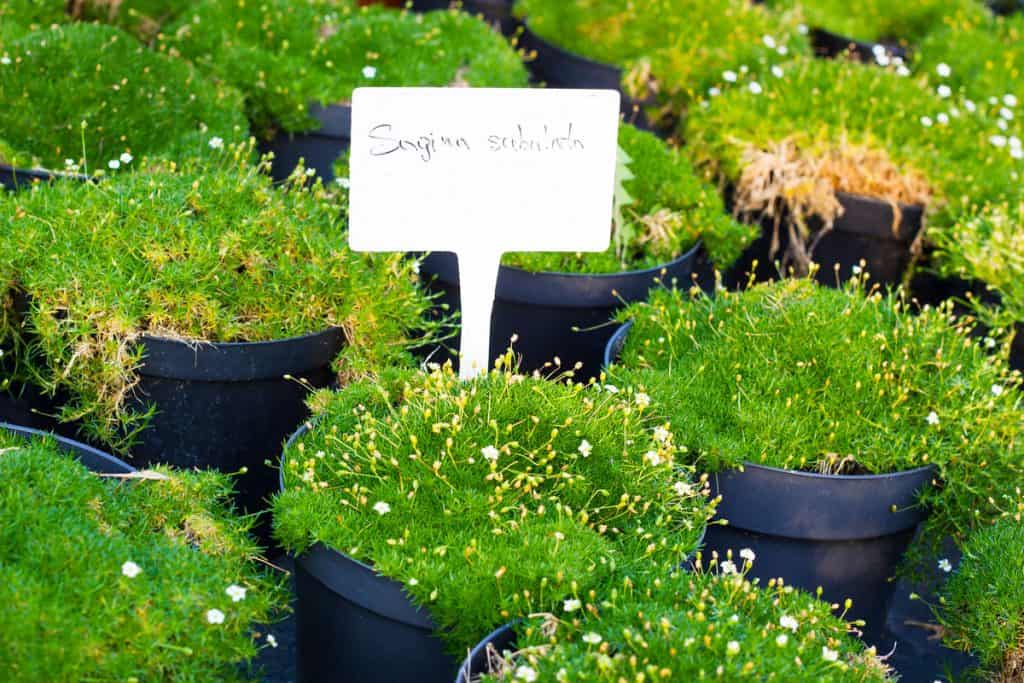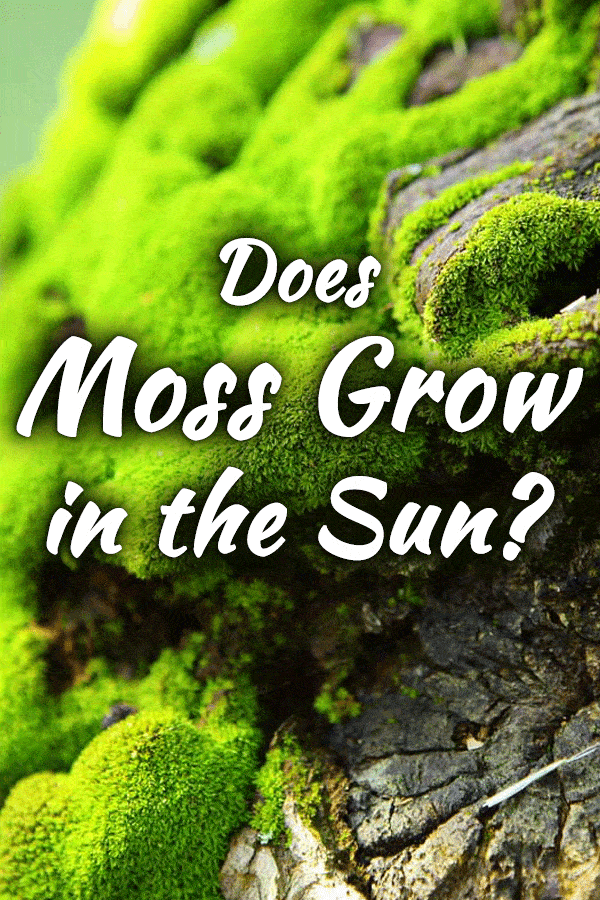A widespread misunderstanding is that moss won't grow in the sun and requires shade to thrive.
Perhaps you have a sunny garden patch or sun-filled space where you want to grow moss, but you're unsure if it will grow in the sun.
Well, you'll be happy to know that several types of moss can grow in the sun, and we'll show you how.
While most prefer shade, a few moss species love the sun and will grow well beneath its rays. Seven types of moss that grow in the sun are:
- Leucobryum glaucum
- Entodon seductrix
- Sagina subulata
- Sagina subulata ‘Aurea'
- Climacium americanum
- Bryum caespiticium
- Ceratodon purpureus
As you can see, there are quite a few sun-loving types of moss. Just keep reading for more details on each and how to grow them!
How much sun does moss need?
The amount of sun each type of moss needs depends wholly on the moss species you intend to grow. Some kinds of moss prefer primarily shaded areas and low-light environments.
While other moss species prefer to be cultivated in areas with direct sun for hours of the day, it's essential to determine which type of moss you will grow to ensure your moss gets just the right amount of sun each day.
Here's a post about hair cap moss for your garden; maybe you'll find it interesting.
What does moss need to grow in the sun?
There aren't any magic tricks or unique formulas to growing moss in the sun. To help moss flourish in the sun, you need an environment with sufficient moisture and soil that is not waterlogged.
Moss has shallow roots, meaning it doesn't require fertilizer or rich soil to survive.
The most important thing to remember when planning to plant moss is to obtain a species that can thrive in the sun.
Not all moss species like direct sunlight; some prefer indirect sunlight, while others flourish in the shade.
Types of moss that will grow in the sun
Multiple options are available when choosing moss that will grow in the sun.
Some species prefer indirect, while others can endure direct sunlight. Be mindful of where you will grow moss and how much light that area will receive daily.
Leucobryum glaucum
Also known as Pincushion moss, Leucobryum glaucum prefers moderate shade and partial sun.
This moss earned its name due to the cushion-like mounds it forms during cultivation.

Pincushion moss cante dry conditions can survive in acidic soil conditions and gro rocky, clay-like, or sandy soil.
Click here to order this tpe of moss on Amazon.
Entodon seductrix
Entodon seductrix moss is known as Round-stemmed Entodon Moss. It is also well-known by its standard, more enticing name of seductive entodon moss.
This captivating moss species will readily grow on soil, rock, or wood. Because of its adaptability and tolerance for the sun, it is a favorite moss for many gardeners.
Entodon moss can grow in the shade but truly loves the sun. It is perfect for growing on concrete walls or making a sweeping mossy lawn.
This shiny green moss has many alluring properties, but its easy maintenance and versatility make it a popular choice for many plant lovers.
Sagina subulata
Sagina subulata is a hardy moss fondly known as Irish Moss. Lush and deep-green in color, this moss can endure foot traffic, covers the ground well, and can handle humidity.
It can handle full and partial sun and likes a lot of moisture. Irish Moss can survive in a climate where temperatures drop below 30 degrees Celsius.

In spring, Irish Moss produces beautiful, small, white flowers. If you already have moss growing in one area of your garden or backyard and are interested in spreading the beauty, this moss is easily transplanted.
Due to shallow roots, it's simple to move these plants. Carefully scoop up clumps and spread them over their new location. This clump should eventually cover another six to twelve inches.
Order Irish Moss seeds here on Amazon.
Sagina subulata 'Aurea'
Often called Scotch Moss or Scottish Moss, Sagina subulata 'Aurea' is a successful ground plant. While known as a versatile moss, it should not be cultivated in areas with full shade.
This moss is ideal for planting between pavers on a garden pathway and will bounce back if stepped on.
Unlike many other types of moss, Scottish moss prefers an environment that is not overwatered and is best suited for climates that aren't humid.
While not the most attractive mid-summer, its beauty shines when tiny, white flowers bloom on this groundcover plant in the spring.
Click here to buy this on Amazon.
Climacium americanum
Climacium americanum is commonly known as Tree Moss. This moss grows well in partial sunlight as well as deep shade. Tree moss is a perennial, meaning you should be able to enjoy this greenery for more than two years.
This moss got its name because it looks like clumps of mini evergreens minus the branches and leaves.
Whether the soil you're working with is rocky or clay-like this moss, you shouldn't have any issues cultivating this plant. It's a hardy moss that is very hardy and can tolerate the occasional over-watering.
Tree moss is often located on tree trunks, rocks near streams, or along woodland trails.
Bryum caespiticium
Another versatile moss, Bryum caespiticium, can tolerate indirect sunlight and grows well in the shade.
While it’s best to keep this moss watered and adequately fed with moisture, it can survive direct sunlight. Its appearance will change from emerald green to a dried-out brown.
Also known as Tufted Thread Moss, this moss has short green shoots with tufts of leaves at the ends (hence the name). It is often located on the tops of walls, rocky or shallow soil, and quarries or excavation sites.
Ceratodon purpureus
If you want to plant moss in a disrupted or utilized area, this is likely the moss for you.
Ceratodon purpureus prefers to bask in the sun's glory and is often found in areas that are continuously used or were perhaps once polluted.
Commonly known as Fire Moss or Red Roof Moss, it is usually found on burn sites or regions exposed to the elements.
Not only is this moss a beauty, with its short green tufts ranging from green to purple and long shoots in a gorgeous reddish brown, but it's one of few mosses that can withstand nearly any environment.
Whether natural or human-made, fire moss can survive and thrive while remaining a magnificent sight.
Planning your moss garden
Before you fill in space in your garden or add some greenery around your concrete walkway, it is suggested that you spend some time in your future moss garden to observe how much sunlight the area receives daily.
Choose one of the types of moss described above that best suits your landscape needs.
Regardless of the amount of sun space, if you're looking for a change to the standard backyard and switching over to a moss yard, there are many excellent options available for you to choose from.





Can Kyoto moss grow in sun?
Hi, I have some moss on my front lawn already, so I thought I would make my whole front lawn a moss lawn. The question I have is if I choose to do this will the moss begin to creep onto my concrete driveway? So far, the established mossy areas are in the centre of my lawn, not close enough to my driveway. But, if I encourage its growth along the driveway border, will it creep? I have poor, compacted clay soil – with very poor drainage! It goes from very dry, to very wet when it rains – which in the Maritimes happens frequently. There is also a lot of ants. Will moss discourage ants or welcome them? Any advice would be appreciated! Thank you
Hello,
Those are good questions. The following links might help you:
How Fast Does Moss Grow? https://gardentabs.com/how-fast-does-moss-grow/
How to Create a Moss Lawn in 5 Easy Steps: https://gardentabs.com/create-moss-lawn/
More Moss information: https://gardentabs.com/tag/moss/
Good afternoon,
I am looking for a substitute for grass. I have an area that is high traffic but also it is under 2 very big trees and provides enough shade but in the afternoons it’s sunny. I have difficulty growing grass therefore I’m trying to find something to substitute and can spread easily. If you have any recommendations I would greatly appreciated it. Thank you.
Hi,
I’m looking to create a moss lawn, looking for Entodon seductrix ideally as south facing ground, having difficulties finding somewhere to buy seeds, I would be grateful for any suggestions.
David